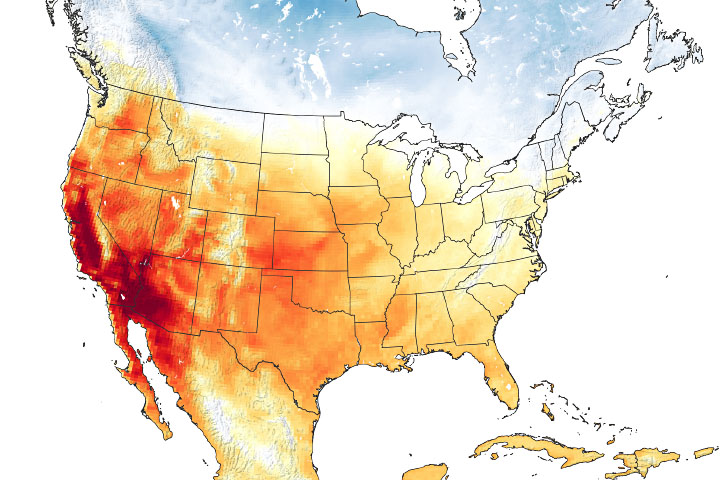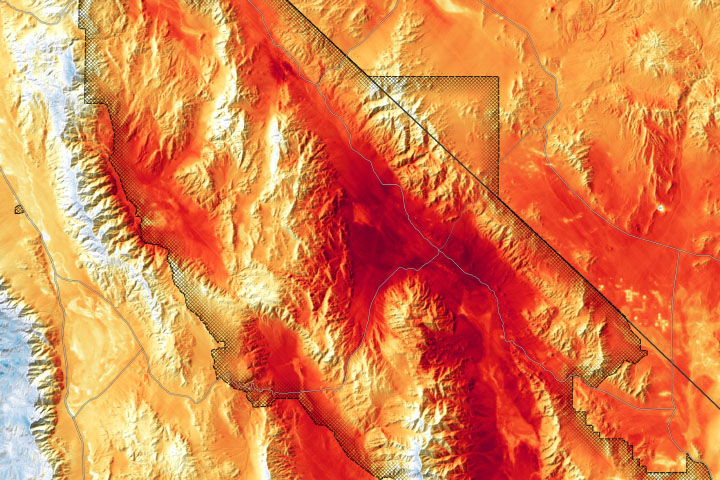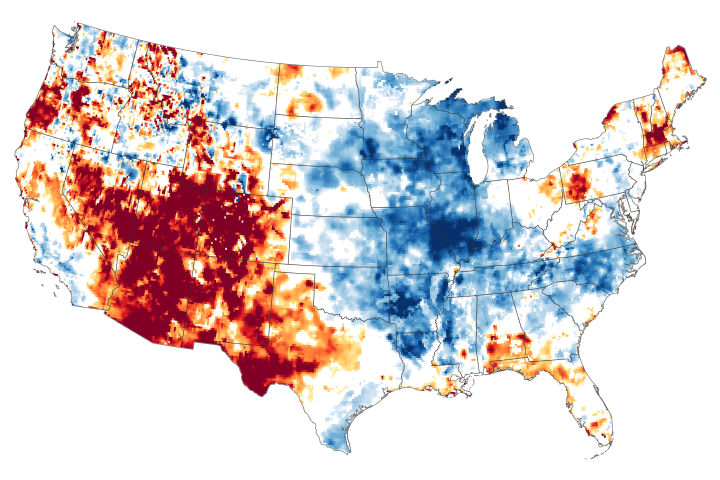

On August 16, 2020, temperatures in Southern California approached the highest levels ever reliably recorded on Earth. That day, NASA’s ECOsystem Spaceborne Thermal Radiometer Experiment on Space Station, or ECOSTRESS, collected a wide view of the heat wave across the region.
The map above shows land surface temperatures (LSTs) at 8:50 a.m. Pacific Daylight Time on August 16 around Death Valley National Park. Note that LSTs are not the same as air temperatures: They reflect how hot the surface of the Earth would feel to the touch and can sometimes be significantly hotter or cooler than air temperatures. (To learn more about land surface temperatures and air temperatures, read: Where is the Hottest Place on Earth?) Two days earlier, ECOSTRESS also collected late-afternoon heatwave data from Los Angeles and the San Fernando Valley.
Mounted on the outside of the International Space Station (ISS), ECOSTRESS uses a radiometer to measure thermal infrared energy emitted from Earth’s surface. It was specifically designed to gather insight into the health of vegetation, but it can also measure the “skin temperature” of Earth’s land surfaces. The unique orbit of the ISS enables ECOSTRESS to capture data at different times of day, as opposed to the regular (usually midday) observations made by many Earth-observing satellites. The sensor has a resolution of about 70 by 70 meters per pixel, about the size of a football field.
NASA Earth Observatory image by Joshua Stevens, using data courtesy of Kerry Cawse-Nicholson/NASA/JPL-Caltech and the ECOSTRESS science team. Text by Michael Carlowicz.
Record-breaking heat and long-term rain and snow shortfalls parched the western United States and Mexico.



